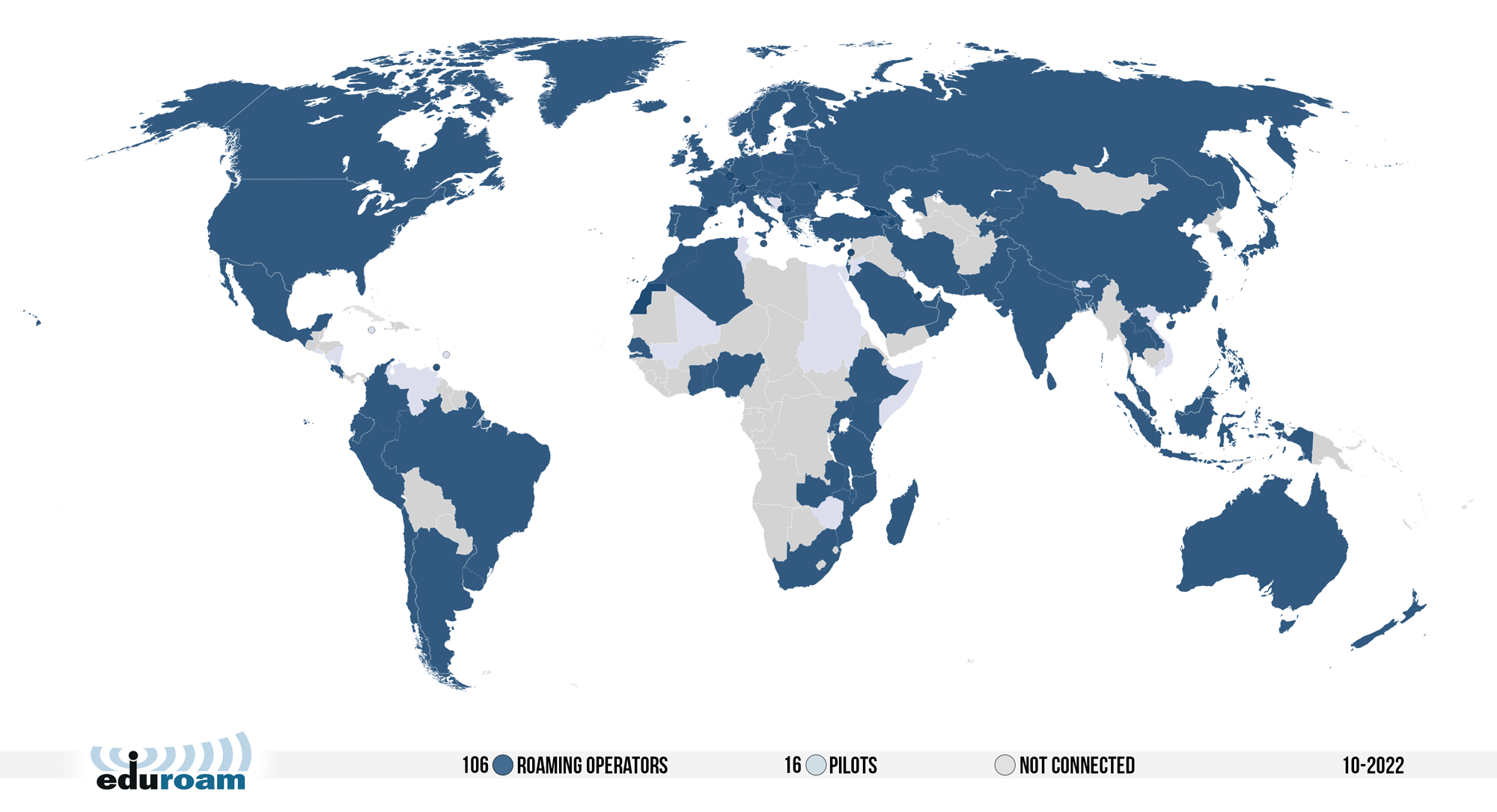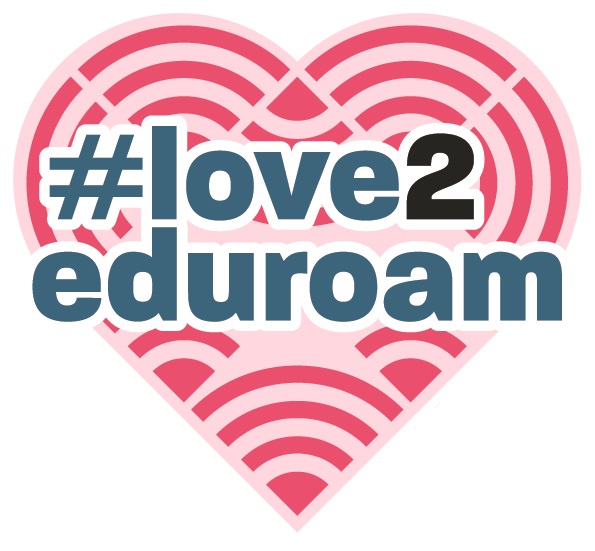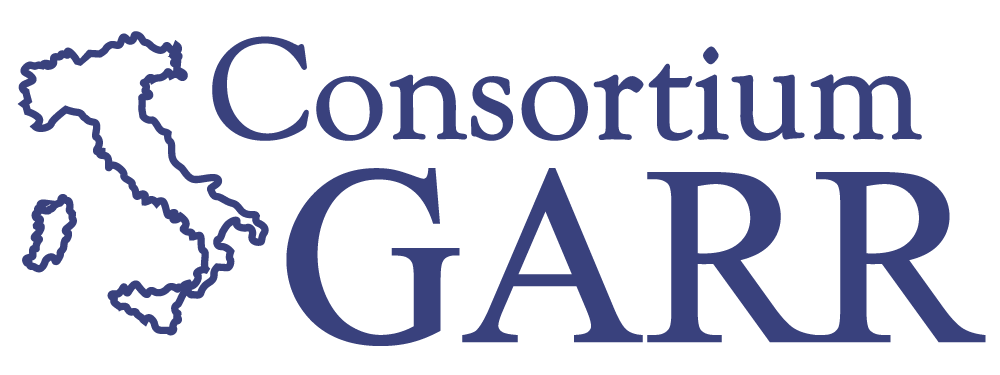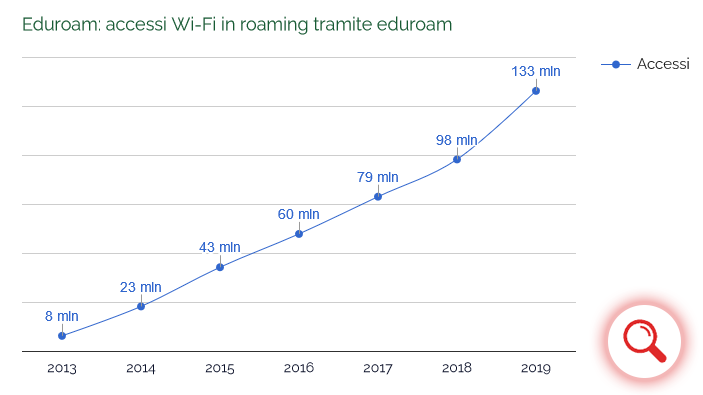eduroam
eduroam (education roaming) is the secure, world-wide roaming access service developed for the international research and education community.
Born in 2003 among six European countries, it has gained momentum across the community and is now available in over 100 countries, allowing students, researchers and staff of participating institutions to have an internet connection, even when visiting other participating institutions, simply by opening their laptop or smartphone, from campuses to coffee shops.
eduroam is a project of GÉANT, the international community of research and education networks, and receives funding from the European Union's Horizon 2020 program.

To find eduroam hotspots near you, visit the dynamic hotspot finder service or download the app "eduroam Companion" for iOS or Android.
How does eduroam work?
eduroam technology is based on the IEEE 802.1X standard and a RADIUS proxy server hierarchy, allowing any user of a participating institution or institution to gain access to the network in any connected institution. Depending on the local policies of the institutions visited, eduroam participants may also have additional resources available.
The eduroam Configuration Assistant Tool (CAT), for institutions that have customized their eduroam profile, has been developed to support institutions in the generation of customized installers for the most popular platforms and thus facilitate end users in configuring their device. If it is not available for your university or organisation, you can consult the information pages that your institution has made available. Alternatively, you can contact your institution's Access Port Manager.
Is It safe?
eduroam is based on the most secure encryption and authentication standards existing today. Its security by far exceeds typical commercial hotspots.
eduroam requires the use of 802.1x which provides end-to-end encryption to ensure that your private user credentials are only available to your home institution. The certificate of your home institution is the only point you need to trust regardless of who operates any intermediate infrastructure.
Furthermore, the user's credentials are protected because eduroam does not share them with the site you are visiting, but they are forwarded to the user's home institution, where they can be verified and validated.
Web Portal, Captive Portal or Splash-Screen based authentication mechanisms are not a secure way of accepting eduroam credentials, even if the website is protected by an HTTPS secure connection.
eduroam will never show a webpage asking for your username and/or password. This is a sign that someone is attempting to hijack your password - do not use any network that requests this information.

What are the benefits of eduroam for users?
The eduroam Wi-Fi roaming service is free for users and once installed on your laptop, mobile phone or other device you won't need to apply for temporary accounts or borrow other people's IDs - just activate your device and you should be online.
Where can i use eduroam?
Whether you're relocating to campus or spending time studying or working at another research and education institution, eduroam gives you seamless internet connectivity..
More than 10,000 hotspots are available at universities, research centres, academies, schools and other research and education institutions in over 100 countries around the world.
Also in Italy?
In Italy eduroam is managed by the Italian Federation Eduroam, coordinated by the Consortium GARR, which defines the rules of use and represents it in other federations and confederations. Here you find the service web page.
What are the benefits of eduroam for institutions?
eduroam offers a single solution that meets all the mobile connectivity requirements of an institution, supporting local users and visitors connecting to the local network and users connecting to other participating networks.
Furthermore, eduroam eliminates the need to provide temporary accounts, thus reducing administrative burdens, because students, staff and researchers visiting another institution or country use the credentials provided by their institution to access Wi-Fi services



 Telegram
Telegram